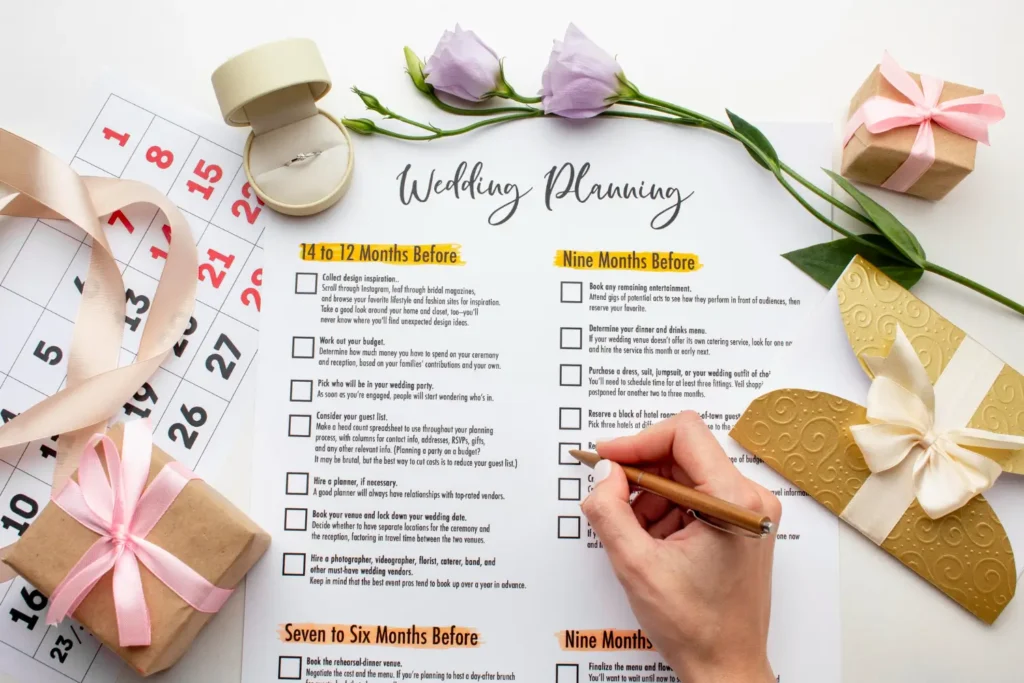Who Pays for What at Modern Weddings
Anyone planning a wedding today is likely to ask, “Who pays for what?” The old rules – where the bride’s family paid for nearly everything – are fading into the background. Now, every couple seems to have their own approach. In my years working at weddings across New England, I’ve watched parents split costs, siblings pitch in, and couples cover expenses with side jobs and digital transfers.
So why are things different? Many couples are getting married later, after building careers and homes of their own. Wedding costs have also climbed, making it harder for one side of the family to cover everything. Social expectations are shifting, and families come in many forms today. The traditional breakdowns just don’t fit as neatly as they once did.
If you’re staring at your budget and feeling unsure about dividing wedding expenses, you’re not alone. This article will clear up common questions about who covers which costs in a wedding modern traditions explained. You’ll find real-world advice and ideas for working together – so money talks become less stressful and maybe even enjoyable.
Who used to pay for weddings traditionally

For years, there was a familiar expectation around weddings: the bride’s family covered most of the costs, while the groom’s family handled a few key events. This was common across many US regions, not just in New England. Parents often referenced these guidelines when planning, even if no one wrote them down. Old habits tend to linger, and many families still mention these customs today, despite changing times.
Classic Expense Breakdown
- Bride’s family: Reception (venue, food, drinks), the wedding dress and accessories, invitations, photography, flowers, and transportation for the wedding party. This often made up about 70–80% of the overall spending.
- Groom’s family: The rehearsal dinner, the groom’s suit or tuxedo, and sometimes the honeymoon. Usually about 10–15% of the budget.
- The couple: Wedding rings, the marriage license, and sometimes small gifts or extra details for each other.
These roles were shaped by social expectations and family dynamics. Traditionally, the bride’s parents were expected to send their daughter into a new family, so they took on the financial responsibility. This approach could put a lot of strain on families without deep pockets, leaving some to stretch their finances to keep up appearances. It mostly worked out for those who could afford it, while others felt pressured to follow along. That’s part of why many couples today are rethinking how the money gets divided.
How Couples Are Splitting Costs Today
Not long ago, paying for a wedding followed a familiar script. Now, couples are reworking the rules to fit their lives. Most pairs I talk to want a system that feels fair and works for them, not just what past generations did.

One popular option is to split everything equally. This is especially common for couples who both work and share similar incomes. It’s simple: each person pays half of every bill, from the venue to the cake. But that isn’t the only way. Some couples decide to split expenses based on earnings. For instance, if one partner brings in a higher income, they might cover a larger share – maybe 60%, while the other covers 40%. This helps both partners feel comfortable and keeps stress low.
Family contributions are still part of the picture, but they tend to be based on what each person can give, not old traditions. A parent might offer to cover the rehearsal dinner, while another helps with the photographer. Some families prefer to pick specific things to sponsor – maybe flowers, music, or a weekend getaway for the couple. Each group decides what feels right, and everyone gets to join in.
These choices suit every kind of family structure. Same-sex couples, blended families, and couples with step-parents are all included in the conversation. For example, Jess and Sam sat down with all their parents and step-parents over coffee. Each person shared what they could help with. By the end, everyone felt valued, and Jess and Sam built a plan that matched their values and priorities. The real goal is to create a celebration that feels right for you and the people you love.
Creative Solutions for Sharing Expenses

Couples today are finding smart and practical ways to split wedding expenses. Many choose to open a joint savings account dedicated just to wedding costs. This lets both partners – and sometimes their parents – add money whenever they want. It makes tracking contributions much easier. One couple even named their joint account something fun to keep the mood light during planning.
Crowdfunding has also gained popularity, especially among couples who already have most household essentials. Instead of a traditional gift registry, they might set up an online fund for guests to contribute toward the honeymoon or a live band. This approach can be engaging, but some guests may not be familiar with it, so clear communication is key to avoid misunderstandings.
Another creative idea is splitting costs by guest count. For example, if one family invites 70 guests and the other invites 50, each side covers expenses for their own invitees. This method can feel fair and helps prevent disagreements about the guest list. Approaches like these show how who pays for what in a wedding can be flexible and collaborative. With open conversations and a willingness to try new ideas, couples can reduce stress and make their celebration truly their own.
Navigating Conversations With Families
Talking with family about wedding expenses can feel uncomfortable. Different generations often have their own expectations, and it’s easy for feelings to get hurt. Old habits, like one side covering most of the costs, don’t always make sense for today’s couples. This means open conversation is more important than ever.
Start early and invite everyone involved, whether that’s parents, step-parents, or others who want to help. Share your plans, budget, and what you’ve learned about current ways couples split costs. Honest discussions help everyone understand what’s possible, and prevent misunderstandings down the line. From personal experience, I’ve seen how skipped conversations can lead to tension – getting clear from the start makes everything smoother.
- Decide together who should join the discussion – include everyone contributing.
- Choose a neutral time and place to talk, so no one feels caught off guard.
- Bring a simple budget outline to guide the conversation.
- Give everyone a chance to share their thoughts, even if they’re a bit traditional.
- State your own limits and what’s most important to you.
- Afterward, follow up with a message or email so everyone remembers the plan.
The goal is to keep all parties informed and reduce the risk of miscommunication. Open, respectful talks now can prevent stress later. For example, one couple’s families decided to split the bar tab after agreeing that live music mattered most. Approaches are changing, and discussing money openly can help make your wedding feel right for everyone involved.
Budgeting Tips for Every Couple
Every couple’s wedding budget looks a bit different. Some split everything evenly, while others get a helping hand from family. Sometimes families pitch in for certain things, or each person pays for specific parts of the event. No matter your situation, the first move is to sit down together and talk openly about what you both want. Make a list of your top priorities. Is it the food, the music, the dress, or maybe a cozy gathering at your favorite local spot?
If you’re paying on your own, consider opening a shared account just for wedding costs. This keeps everything organized and easy to track. When families are involved, have a frank conversation about how much they’d like to contribute, and be clear about who’s covering what. If several people are helping, divide up the major expenses so everyone knows their role. This helps avoid any confusion when payments are due.
“The best wedding budgets start with honest conversations before the spending begins. That way, everyone knows what’s possible, and nobody’s surprised later.”
– Maggie Collins, certified financial planner and occasional wedding wrangler
Stick to what feels right for you, not what you see online or what others expect. Some couples want a big celebration, while others are happiest with a simple backyard party and good friends. There’s no one right way. The real goal is a day you both enjoy and memories that don’t come with regret or stress after the fact.
Case Studies in Modern Wedding Funding
Here are two stories that show how different couples manage paying for a wedding today. These examples highlight real decisions and the feelings that come with them.
Emily and Dan from Providence took a team approach. Both families agreed to split every major expense down the middle. They met a few times to go over numbers, share opinions, and settle on priorities. There were a few spirited discussions about the guest list and whether an open bar fit the budget, but everyone felt involved. In the end, no one felt overwhelmed. The biggest benefit was that both families felt like they helped create something special together. This approach worked well because expectations were clear right from the start.
Jess and Maya chose a different path. They have blended families and decided to pay for everything themselves. They set a budget based on what they could realistically afford, focused on what mattered most, and skipped anything that didn’t fit. For them, that meant saying yes to live music but passing on expensive extras. They politely let their families know they had it covered. By the time their wedding arrived, they felt proud of what they achieved on their own. Their main takeaway was that handling all expenses themselves made every decision feel more meaningful.
There is no single right way to pay for a wedding. Whether you include family, pay as a couple, or try something in between, open communication is key. The happiest celebrations usually happen when everyone understands the plan and feels respected.
Finding the Right Approach for You
There’s no single right way to handle wedding costs these days. Every couple faces their own mix of hopes, family input, and financial realities. The old rules are fading, making space for more personal decisions. It helps to talk openly with each other and with anyone else involved. Even if those conversations feel a bit uncomfortable, they set the stage for fewer surprises later.
Forget what you’ve heard about what you “should” do. The happiest couples are the ones who stay flexible and honest, even if plans change along the way. Your wedding is about more than invoices or who paid for the cake. Choose the approach that fits your circumstances and values. Most of all, start your marriage feeling good about how you made these choices, together.

